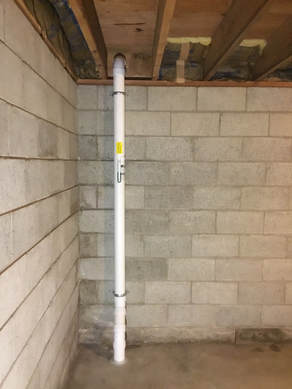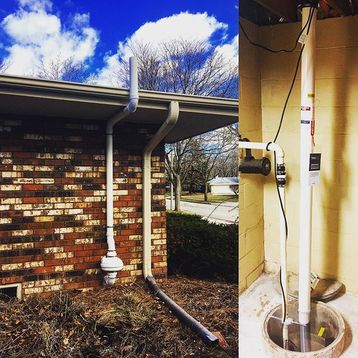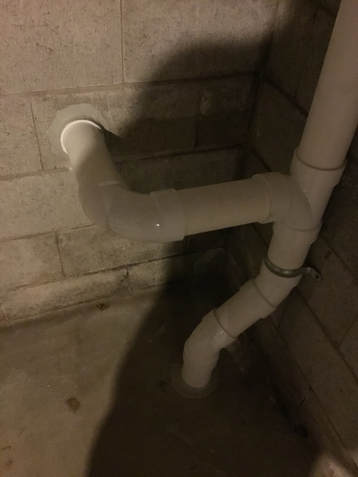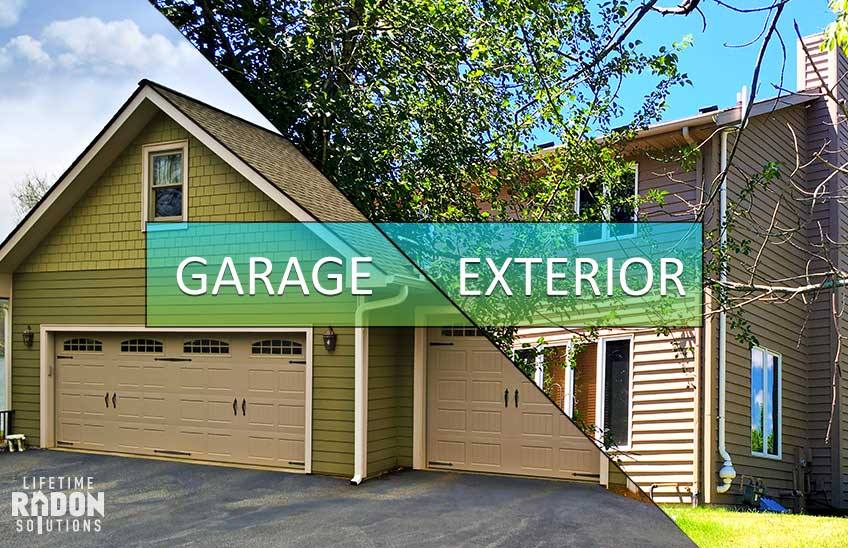Appleton Radon Mitigation
|
|
Radon Mitigation Systems
Sub-slab Depressurization
|
Radon gas is a soil gas that is present in the sub-slab material under a home or commercial property. Sub-slab depressurization is one of the most common ways to mitigate this soil gas before it enters the living space. The reason this method is so effective is radon always finds the path of least resistance and in doing so, radon is drawn into occupied dwellings. Barometric pressure pushing and pulling against the home can create a pressure differential between the soil and the structure causing negative pressure within the structure and ultimately drawing the radon into the home or commercial structure altogether. If we can create a large enough suction pit under the slab and seal the main pathways into the structure (cracks in the slab, seal the sump crock, etc.) creating a vacuum under the slab, we can use a radon mitigation fan and PVC pipe to draw the radon gas from beneath the slab and reroute it above the roofline on the exterior of the home.
|
Drain-tile Depressurization
|
Drain-tile depressurization works almost identical to sub-slab depressurization only we are using the drain-tile system beneath the home to create maximum suction of the radon gas from the entire route of the drain-tile system. Since radon gas always finds the path of least resistance and the drain-tile system is open to the soil beneath the structure, the radon gas tends to travel and move freely throughout this drain system. By tapping into the drain-tile system at either the sump crock or by coring into the slab of the structure where drain-tile is present, we can reroute the radon gas within the drain-tile, and within the surrounding soil, to the proper height above the roofline. This method works very well because many times you can get suction throughout the entire footprint of the structure and the sealed sump crock acts as a great "suction pit."
|
Block-wall Depressurization
|
Similar to how radon can consolidate and move within the drain-tile system, radon can also move freely throughout the voids within a block-wall foundation. If this is the case, we make sure we seal the tops of the block-wall foundation, if not already sealed, and tap into the block as displayed in the picture. Block-wall depressurization is especially important if the levels in a structure are excessively high or if a customer wishes to not just get there levels to just below the EPA action level of 4 pCi/L but rather get them as close to outdoor air conditions as possible. Furthermore, block-wall depressurization is generally a really good idea if there is no drain-tile and the technician has to dig a suction pit at their main collection point. Lastly block-wall depressurization is rarely if ever a standalone technique for radon mitigation. Generally, block-wall depressurization is a technique that is used in conjunction with a main collection point during the radon mitigation process.
|
Garage Radon Mitigation System
vs.
External Radon Mitigation System
Garage-style radon mitigation systems are in many cases the favored option among residential property owners. This is of course because garage-style systems offer a lot of benefits including a more atheistically pleasing, exterior curb-appeal, sheltering the radon fan from outdoor elements and in many cases, they can be more cost-effective for the homeowner. They tend to be more atheistically pleasing because the piping and the fan are housed inside of the garage rather than mounted on the exterior of the home. Furthermore, because the fan is located inside, it is less likely to suffer from the same wear and tear that an outdoor fan would. And lastly, many other companies charge extra to go through the garage because it can be more labor intensive and time consuming. However, we charge the same base price as an exterior system and in many cases, we can eliminate your electrical costs if we can find and utilize an electrical outlet inside of the garage.
Many times, exterior systems are the only option because there isn't a way to properly run the system into the garage or there is not an attached garage at all. If that is the case, no need to worry. Our expert technicians can find the best place to run your exterior system where we can protect your homes curb-appeal and potentially extend the life of your fan. Furthermore, there are some municipalities and many homes that allow your exterior radon fan to plug into an exterior outlet with the proper outlet cover to protect the outlet from the elements. Whatever the challenge, our radon technicians can tackle your radon mitigation project. With nearly 30 years of combined radon mitigation experience and 20 years in business we can handle all of your needs and protect both the value of your home and the health of your family.
Contact Us!Appleton Radon Mitigation System Solutions
2830 N Park Dr Ln #10 Appleton, WI 54911 |





